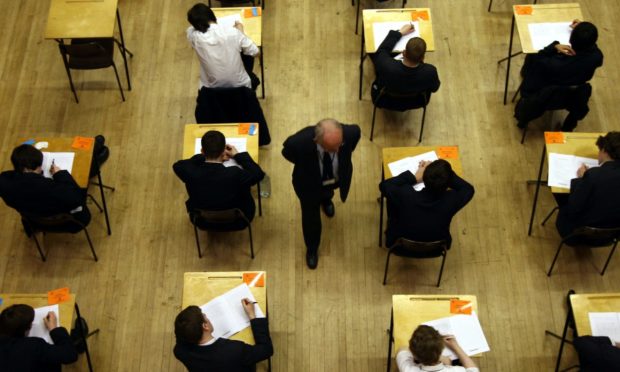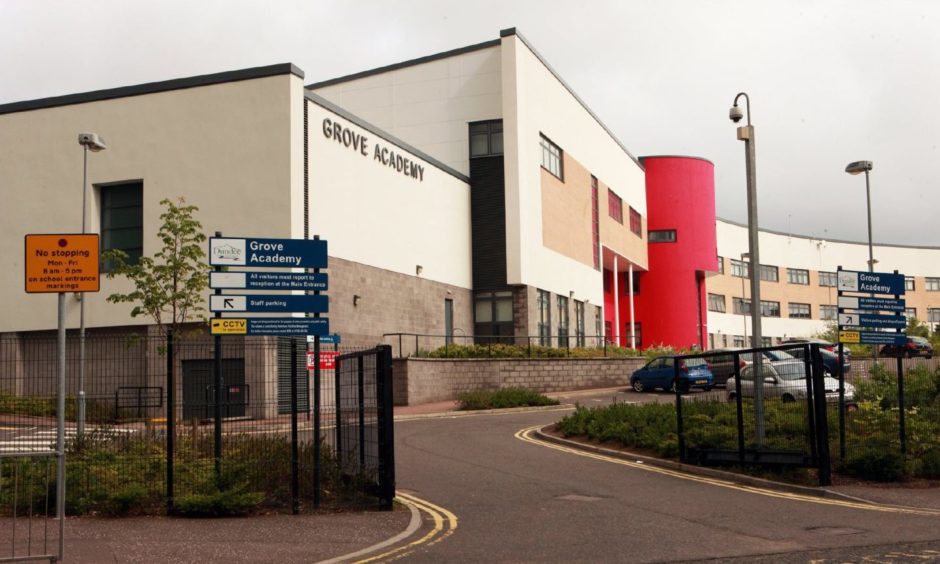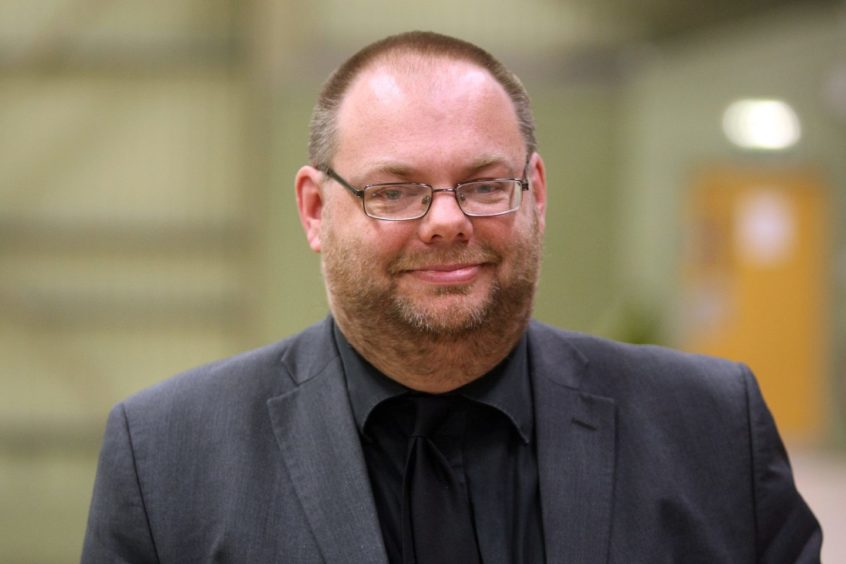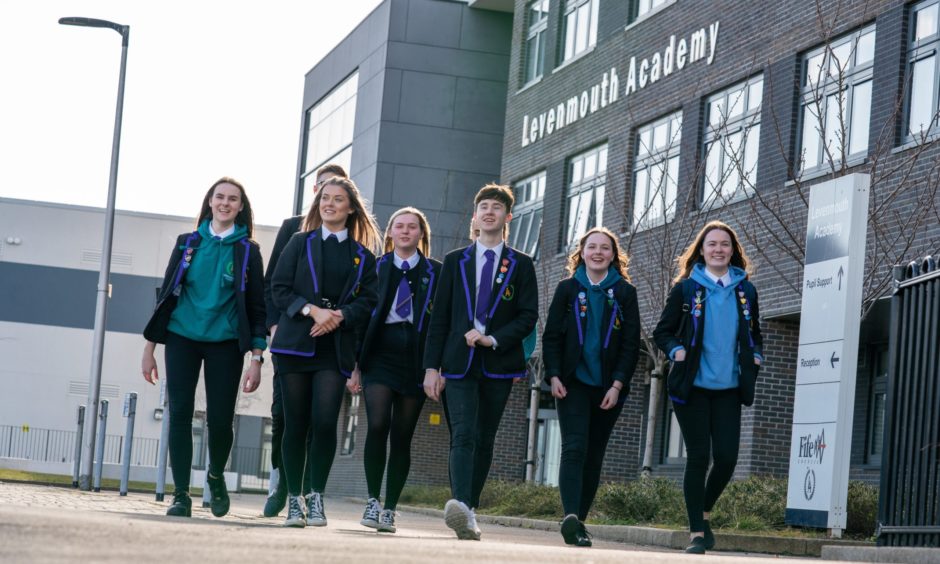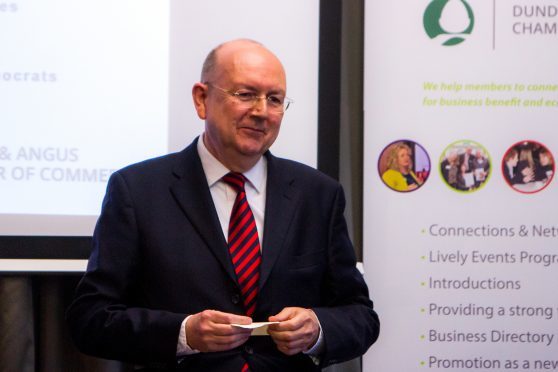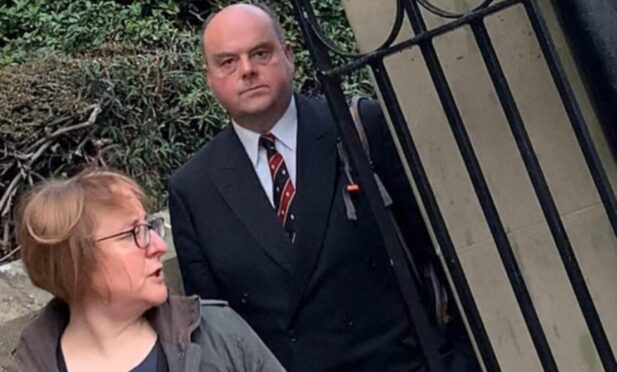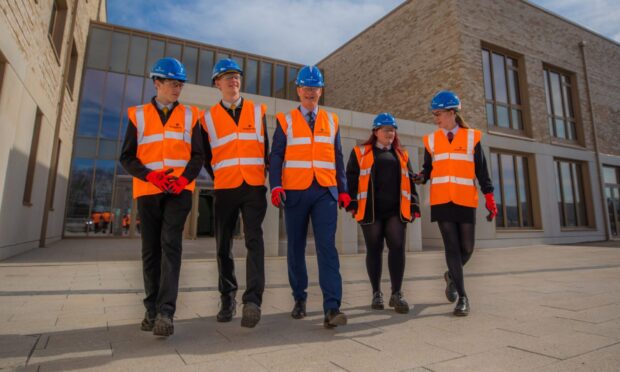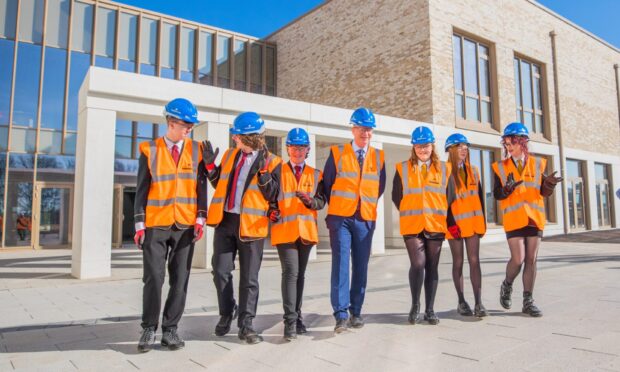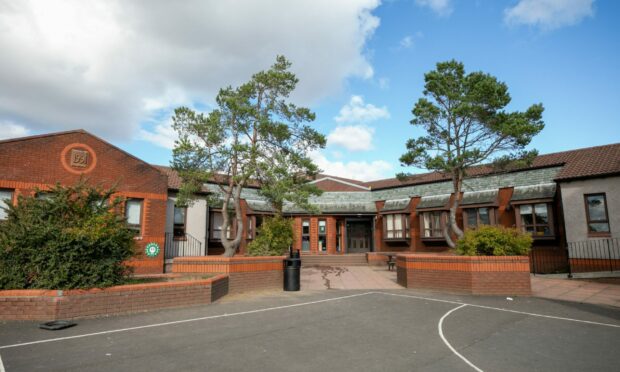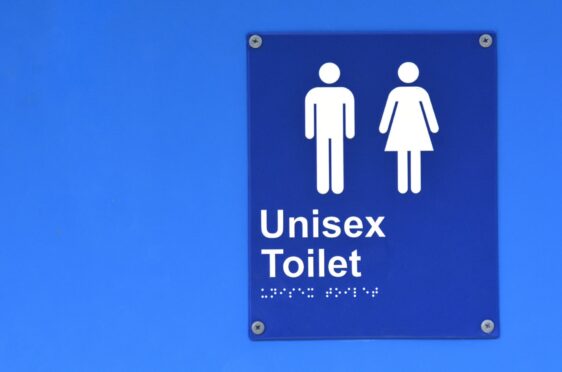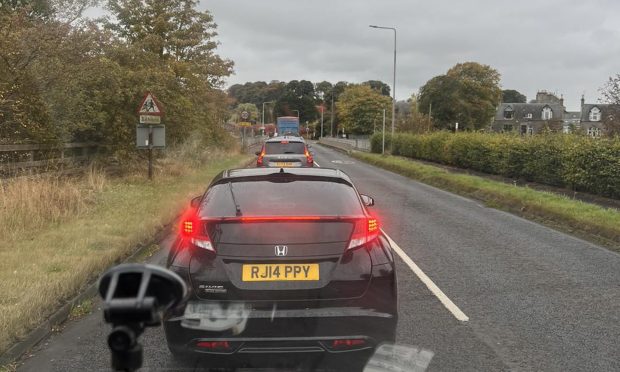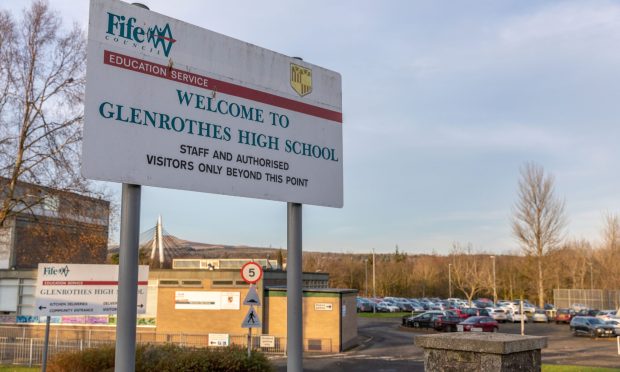Pupils from deprived backgrounds in Tayside and Fife were less likely to achieve Higher qualifications than those in wealthier areas even after teacher estimates were accepted, figures reveal.
The pass rates for this year’s Higher exams were provided in response to a freedom of information (FOI) request submitted to the Scottish Government.
The Scottish Qualifications Authority (SQA) had come under fire when the results were first released after it was revealed that Higher pass rates for pupils in the most deprived backgrounds were reduced by more than those in wealthier areas.
This prompted a u-turn from the Scottish Government, which meant this year’s results were based the original teacher estimates after exams were cancelled for the first time in history due to the Covid-19 pandemic.
We compared some of the schools in areas of highest deprivation with those in more affluent areas to see what this year’s results looked like.
Dundee
More than half (56%) of fifth year pupils at Braeview Academy were not put forward for a Higher qualification this year. This is an increase on last year, when 46% of fifth year pupils did not take any Higher exams.
Of those pupils who did take Higher courses, 44% achieved one or more passes – down from 46% in 2019. A further 11% achieved three or more Higher passes, which is also down from last year.
Scottish Government data shows that 47% of pupils at Braeview live in one of Scotland’s most deprived areas.
In comparison, 60% of fifth year pupils at Grove Academy achieved three or more Higher passes. This was up from 51% last year and also slightly above the 2018 figure of 58%.
According to government figures, just six percent of pupils at the Ferry secondary school live in deprivation.
Children and families services convener Councillor Stewart Hunter said: “The impact of the pandemic was felt across all our schools, but those young people who are the focus of our attainment challenge efforts would have been most disadvantaged.
“That is why schools and the council’s children and families services are redoubling their efforts to continue and build on the progress that was being made before the pandemic.
“We want to improve outcomes for these children and young people, but there are no quick fixes or easy solutions. This report outlines how creativity is being used by our dedicated staff to bring about improvements for young people to help them onto a positive future.”
A Dundee City Council spokesperson added: “The children and families committee was recently updated on the work across Dundee to cut the poverty-related attainment gap, and produce better outcomes for children and young people from the city’s most deprived communities.
“A senior councillor said that efforts will be redoubled to help pupils following the period schools were closed to fight coronavirus.
The impact of the pandemic was felt across all our schools, but those young people who are the focus of our attainment challenge efforts would have been most disadvantaged.
Councillor Stewart Hunter
“The children and families service committee heard that there were ‘improving trends’ in attainment, but the impact of coronavirus and the cancelling of this year’s exams make it difficult to make comparisons with previous years.
“However, committee members were told, the response to the pandemic is now allowing new flexibility around how money is targeted at pupils.
“Dundee City Council has been able to claim over £20 million from the Scottish Government in recent years to assist with attainment challenge projects, and a similar sum has been awarded under the Pupil Equity Fund.
“Developments highlighted to the committee include the positive impact that attainment challenge projects are making in early learning at nurseries to help young children with language and communications skills.
“Meanwhile, additional study and learning support funding is being provided to all secondary schools for looked after and care experienced young people including examination preparation.”
Angus
At Arbroath Academy, where more than a quarter of pupils live in the most deprived areas, 40% of fifth year pupils did not receive a single Higher qualification. This is down from 48% in 2019.
Monifieth High School saw 64% of its fifth years achieve three or more Higher passes, up from 51% in 2019 and 55% in 2018.
Data from the Scottish Government shows that less than 5% of pupils at Monifieth High live in deprivation.
Similarly, 60% of fifth year pupils at Webster’s High School in Kirriemuir achieved three Higher passes more this year. This is up from 32% and 38% in 2019 and 2018 respectively.
The Scottish Government did not provide data as to how many pupils who attend Webster’s High live in the poorest areas.
Angus Council has been approached for comment.
Perth and Kinross
St John’s RC Academy in Perth, where more than a fifth of pupils live in deprivation, saw an increase in the number of pupils achieving three or more Highers.
The FOI figures show that 53% of fifth year pupils achieved this in 2020, compared to 40% last year.
No figure was provided for the percentage of pupils who did not take any Higher subjects or received grade D or a no award. However in 2019, this figure was 32%.
At Perth High School, where less than five per cent of pupils live in one of Scotland’s most deprived areas, 63% of fifth year pupils achieved three or more Higher passes.
This was almost twice as many as last year, when just 34% of fifth year students gained three or more Higher qualifications, and is also an increase on 2018 where 49% were awarded this.
A Perth & Kinross Council spokesman said: “We want all children and young people in Perth and Kinross to reach their full potential, academically and personally.
“While we have seen outcomes improve for pupils across Perth and Kinross in recent years, we know there is still much work to be done.
“Our Raising Attainment Strategy for 2020-2023 was approved by our Lifelong Learning Committee in August and sets out our plans for the next three years.
“Areas of particular focus include improving writing and numeracy, raising attainment among looked after children and young people, reducing the gender gap on developmental milestones between boys and girls, improving attendance and providing additional support for wellbeing and mental health.”
Fife
More than half of pupils at Levenmouth Academy in Buckhaven live one of Scotland’s most deprived areas, according to figures provided by the Scottish Government.
This year’s results saw 62% of fifth year pupils at the school receiving no Higher qualifications, with 8% of those who did take subjects at Higher level not passing at all.
In comparison, 67% Madras College pupils achieved three or more Higher passes in their fifth year. No data was provided for the percentage of pupils who did not take Higher subjects or whose teachers estimates were either a D or no award.
Less than one percent of pupils who attend the St Andrews school live in deprivation.
Convener of Fife Council’s education and children’s services committee Councillor Fay Sinclair said: “Fife Council has made significant progress in recent years on our longstanding commitment to closing the attainment gap as part of our ambition to reduce inequalities and build a fairer Fife.
“Despite challenging circumstances, Fife pupils and staff gained significant achievements this year.
“We have seen a rise in both the number and quality of exam passes, as well as a closing of the poverty-related attainment gap and I think it is really important that this cohort is able to celebrate that success.”
Attainment gap is “inexcusable”
The disparity in results was criticised by one Conservative politician, who claimed those from poorer backgrounds were being “sent out into the world with fewer prospects”.
Bill Bowman, MSP for the North East Scotland constituency, said: “It is inexcusable that so many young Dundonians are leaving school without a qualification.
“They are being sent out into the world with fewer prospects just because they are from a poorer background.
“There is no doubt that teachers at all these schools want to get these pupils to leave with qualifications.
“But responsibility for Dundee’s growing attainment gap lies with the SNP. This year, school pupils missed an entire term of classroom teaching, and we know that the most disadvantaged pupils were hit the hardest.
“To fix this, the mess Nicola Sturgeon’s government has made, the Scottish Conservatives will close the attainment gap with a laser focus on targeting poverty at school and a clear goal to restore teacher numbers.”
What does the Scottish Government say?
In a statement, a Scottish Government spokeswoman responded: “A return to full-time schooling in August is enhancing the life chances of children and young people and starting to reverse any damaging impacts of lockdown, particularly for pupils from the most disadvantaged backgrounds.
“That is why we are continuing with our commitment to invest £182 million from the Attainment Scotland Fund in 2020/21 as well as investing £25 million to support digital inclusion amongst school aged learners.
“The gap between the proportion of Dundee City school leavers from the most and least deprived areas attaining one pass or more at SCQF level six or better was 36.7 percentage points in 2018/19, down from 42.2 percentage points in 2017/18 and from 40.0 percentage points in 2012/13.
They are being sent out into the world with fewer prospects just because they are from a poorer background.”
Bill Bowman, MSP for North East Scotland
“53.6% of 2018/19 Dundee City school leavers attained one pass or more at SCQF level six or better, up from 48.9% in 2017/18 and from 41.3% in 2009/10.
“Teacher numbers are also the highest in a decade with the number of primary teachers the highest since 1980.
“We have provided £80 million to local authorities, enough to recruit around 1,400 additional teachers and 200 support staff, in order to bring much needed resilience to the education system and to compensate for any loss of learning suffered by children and young people during lockdown by intensifying support for learners who need it most.
“Local authorities are still working through their recruitment processes, and current estimates suggest that an additional 1,118 teachers have already been recruited, with plans in place to recruit another 250.”
